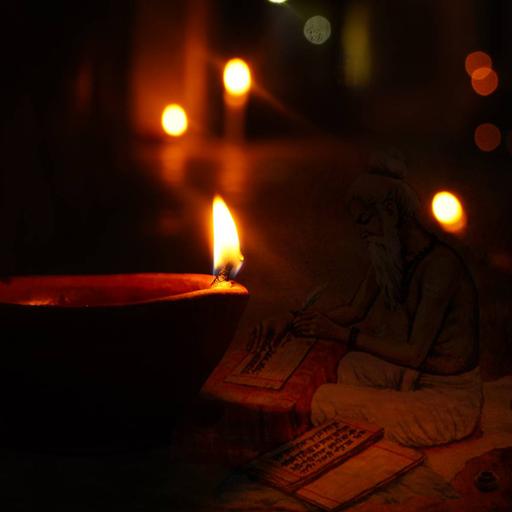Atharva Veda
Audio | Sanskrit
Atharva Veda, the second oldest Indian text and fourth Vedic collection, comprises 730 hymns and 6000 mantras depicted in 20 books. Originated from the Sanskrit word 'Atharavan' and 'Veda', Atharva Veda is implicated as 'knowledge storehouse for Atharavans'. As composed of two groups of rishis, the Atharvanas and the Angirasa, the Atharva Veda was initially called as Ātharvāṅgirasa. The Atharva Veda provides information about culture, customs, and beliefs as well as the aspirations and frustrations of everyday Vedic life. In contrast to 'the hieratic religion' of other Vedas, the Atharva Veda is also known as 'Veda of magical formula'. It inculcates the formulas for magic, rituals for marriage, and funerals and explains the responsibilities of court priests and royal rituals. Also defines the meaning of rituals. It comprises the spells for healing diseases and removal of demons as well as speculative hymns related to the cosmos. The Atharvaveda was compiled as a Veda in 1200 BCE – 1000 BCE and was split into many categories like Bhashijya, Paushtika, Prayashctta, Rajakarma, Strikarma, Darshana, Kuntapa, and so on. The Atharva Veda incorporates both the Samhita layer of text and Brahmana (philosophical speculations). The Brahmana text includes three primary Upanishads as the Mundaka Upanishad, the Mandukya Upanishad, and the Prashna Upanishad. Mundaka Upanishad:- Popularly known as poetic-styled Upanishad, Mundaka Upanishad comprises 64 verses, depicted in the form of mantras. These mantras dealt with teaching and meditation on spiritual knowledge. The Mundaka Upanishad contains three Mundakams (parts). The first explains the "Higher Knowledge" and "Lower Knowledge" of science. The second dealt with the nature of the Brahman, the Atman (Self, Soul), and the path to knowing him. While the third Mundakam describes the state of knowing Brahman as freedom, fearlessness, liberation, and bliss. Mandukya Upanishad:- It is the shortest Upanishad. It discusses the syllable Om, and the theory of four states of consciousness that asserts the existence and nature of Atman. Prashna Upanishad:- Explains philosophy on various levels.

Free
ZIP (28 Units)
Atharva Veda
Audio | Sanskrit
